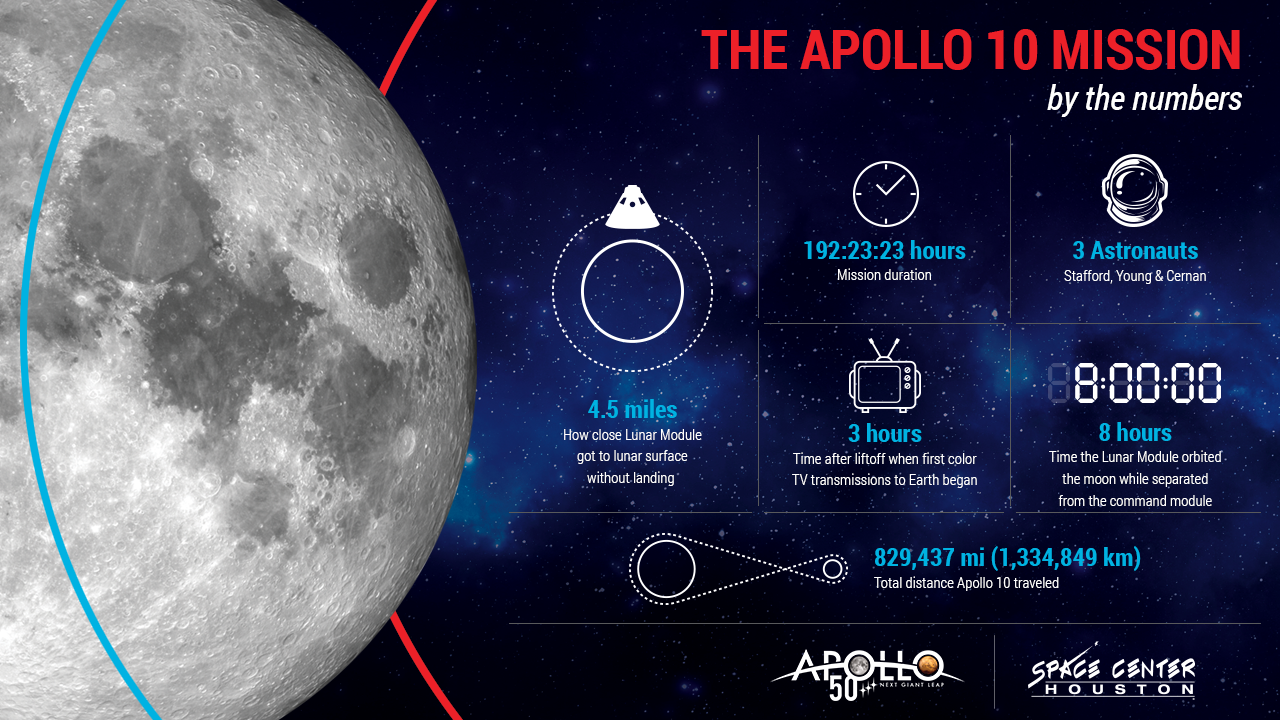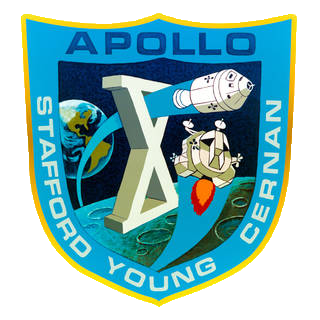
Apollo 10 was the fourth crewed mission in the Apollo Program and the second mission to orbit the Moon.
The mission served as a “dress rehearsal” for the first Moon landing, testing the components and procedures. It encompassed all aspects of an actual crewed lunar landing, except the landing.
The mission was crewed by commander Tom Stafford, command module pilot John Young, and lunar module pilot Gene Cernan.
Objectives included a scheduled eight-hour lunar orbit of the separated lunar module (LM) and descent to about nine miles off the Moon’s surface before ascending for rendezvous and docking with the command and service module in about a 70-mile circular lunar orbit. Pertinent data to be gathered in this landing rehearsal dealt with the lunar potential, or gravitational effect, to refine the Earth-based crewed spaceflight network tracking techniques, and to check out LM programmed trajectories and radar, and lunar flight control systems. Twelve television transmissions to Earth were planned. All mission objectives were achieved.
More to explore about Apollo 10

Backup Crew
L. Gordon Cooper Jr., Commander
Edgar D. Mitchell, Lunar Module Pilot
Donn F. Eisele, Command Module Pilot
Payload
Charlie Brown (SM-106)
Snoopy (LM-4)
Launch
May 18, 1969; 12:49 p.m. EDT
Launch Pad 39B
Saturn-V AS-505
High Bay 2
Mobile Launcher Platform-3
Firing Room 3
Orbit
Altitude: 118.83 miles
Inclination: 32.546 degrees
Orbits: 31 revolutions
Duration: eight days, 23 minutes, 23 seconds
Landing
May 26, 1969; 12:52:23 p.m. EDT
Pacific Ocean
Recovery Ship: USS Princeton








